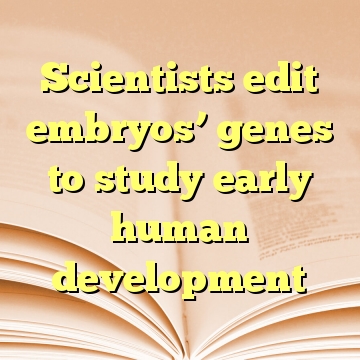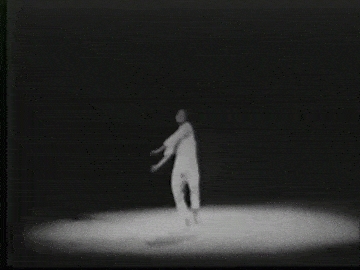The scarred muse: Uma Thurman and the story of betrayal
"VON SHTERNBERG WAS A MARLEN DIETRICH, Hitchcock - Ingrid Bergman, Andre Techine - Catherine Deneuve. This is a special connection, which I am proud of, and maybe one day people will talk about me and Mind as much as they say about other [creative unions], "argued Quentin Tarantino in an interview for 2004, timed to the premiere of the second part of Kill Bill ".

In public, he and Uma Thurman really looked like a classic duet "muse and artist" - including because they illustrated the saying "opposites attract". He is an expressive, noisy, fussy creator who is difficult to shut up. She is Lauren Bacall of her era, not too talkative, an actress-enigma with a touch of aristocracy who avoids publicity (this is not a completely contrived image: Thurman has noble roots inherited from her mother, a model who still wore the German prefix "background" in the last name) .
“The thing is that this connection is just there, and I don’t want to explain some things with words,” Quentin developed the theme. And indeed, he was one of the few who examined behind the facade and was able to transfer to the screen the fragility and uncertainty of Thurman, its internal tension and anger - the abyss of anger. What he did not guess or simply did not want to think about was that this anger was directed both at himself and at his closest ally in the person of Harvey Weinstein. The beautiful, but inevitably toxic myth about the muse and creator lasted for another fourteen years, until it was dust.
The difference between the facade and the wrong side in the case of Thurman is generally very eloquent. On the surface, childhood in a well-to-do family, Buddhist upbringing received from culturologist Robert Thurman, who specialized in India and Tibet, and the “green corridor” to the world of fashion — from his mother (Uma’s model career began at the age of fifteen, and by sixteen she was on the cover of the British Vogue). In depth - the uncertainty in his own appearance, which was carried out from childhood, about which Thurman has to listen to today as well: her descriptions in the secular columns necessarily included the dubious epithet "lanky" ("lanky", "disproportionately" thin relative to his height) and almost any biography of the actress is in a hurry to remind how in childhood she was mocked for the shape of her nose and big feet, and a friend of the family offered to make her rhinoplasty - Uma was then ten years old.
To the innocent question of the interviewer, "You starred in the movie" Be Spoke "- and how do you keep calm yourself?" Thurman honestly replied: "I don’t. I don’t maintain calm! I am kicking up my ass!"
None of this contributed to the maintenance of Buddhist appeasement. Dysmorphophobia, developed by Thurman in her childhood years, struck again in the late 90s, when after the birth of her daughter she began to feel that she was "indecently stout". Constant references to the “hottest women on the planet” ratings seem to have done even more harm to self-esteem, overestimating the already exorbitant level of expectations. Remembering this already in the next decade, Thurman to the innocent question of the interviewer, "You starred in the movie" Be Spoke "- and how do you maintain calmness yourself?" honestly replied: "I don’t. I don’t keep calm! I kick ass all over! ... Uncertainty never passes, just over the years you begin to perceive it more easily, in a Zen way."
A similar situation with the career Thurman. With an enviable list of directors, with whom the actress managed to work (chronologically: from Gilliam to von Trier), she was chronically unlucky with roles and films that could really reveal her. Minus three works from Tarantino, rare luck - from "Dangerous Liaisons", where the eighteen-year-old Uma is not lost against the background of Glenn Close and John Malkovich, to "Hysterical Blindness", for which Thurman received an Emmy Award - negated by commercial failures and catastrophic errors casting The peak of bad luck ("Batman and Robin" and a remake of "The Avengers", for which Thurman was marked with a nomination for "Golden Raspberry") coincided with a personal crisis, and the actress failed to get out of it without loss. “I take this philosophically: if you want to be famous - get ready to pay your bills,” Uma said, commenting on a painful, tabloid-torn divorce from Itan Hawke. “It’s obvious that this is my fate: the worst moments overlap the best.”

To reduce Thurman’s thirty-year career only to cooperate with Tarantino would be a great exaggeration, but, in general, one can understand where his opinion of her as an “actress of one director” came from. Tarantino, with his cinematic foot-fetishism, certainly did not confuse Thurman’s foot size (the actress and director joked that they could have made a separate film from his close-ups of feet). He did not even try to make a British retro-spy on Diana Rigg's patterns. The bride, Black Mamba, Beatrix Kiddo, mother - in “Kill Bill” is not one, but several roles, personally written under the Mind, and each of the characters has resonated with her personal experience. However, this jackpot also had its price - and Thurman was not ready to pay it.
In a new interview with the New York Times, Thurman tells how, during the filming of the second part of the Tarantino saga, despite the protests of the actress, he persuaded her to get into a convertible and gave the task to squeeze the speed of 64 km / h out of the car ("Otherwise, your hair in the frame won't fly and will have to re-shoot "). It is still not entirely clear what exactly went wrong. According to Uma, the car was defective, as hinted to her by one of the crew members. Tarantino in a return interview says that the small S-shaped bend of the road, which he did not notice, was to blame - and it was on him that Thurman brought the car: "I came to her, beaming with joy, and said that there would be no problems. Uma answered ... "Okay." Because she believed in me, trusted me. I told her that the road was straight, that there was no danger. And that was not so. I was mistaken. "
The error was expensive. From physical injuries sustained in the accident, the actress can not recover until now. It was even more difficult to come to terms with the realization that a close person without special need, only from director's excitement and a fanatical penchant for realism, sent her to risk her life.
Tarantino on the set shook her face (like Michael Madsen's character) and strangled her with chains in a fight scene with a Japanese killer schoolgirl
It took about fifteen years for Thurman to get the shots and make sure that the accident happened through no fault of her own: "My personal detective story in the style of Nancy Drew." All these years, representatives of the Weinstein Company either refused to issue footage to her, or said that they would do it as soon as the actress signed a document on the rejection of any claims. Uma, exactly as Black Mamba calls her enemies by name: "Lawrence Bender, E. Bennet Walsh and the odious Harvey Weinstein are personally responsible [for trying to hide the truth]. They lied, destroyed evidence and continued to lie about what caused me irreparable harm, and then tried to hide this fact "(Weinstein Company refutes the charges Thurman).
"What really finished me off in this accident was a cheap shot. By that time, I had passed many circles of hell. I really believed that I was sacrificing myself for the common good, and everything that I agreed to participate in, what I allowed it to happen, for me it was like a fierce fight in the mud with an angry older brother, - says Thurman, recalling how Tarantino on the set shook her face (like Michael Madsen's character) and choked her with chains in a fight scene with a Japanese killer schoolgirl - But in these cases, the last word at least was for many th. " In the story of the accident, the last word took fifteen years and - despite the fact that in the end the director found and handed the actress the shots of the unfortunate episode - it was worth the trust, which is unlikely to ever be fully restored.
In the anti-harassment campaign that unfolded in Hollywood, some commentators saw the threat of the “creator and muse” model, without which, in their opinion, “many great films would not have taken place”. The example of Thurman and Tarantino shows what is wrong with this model: in practice, the muse in it turns out to be not an equal partner, but an instrument and hostage of the studio system, which can put old-fashioned "romanticism" in the wind.
Photo:Miramax





